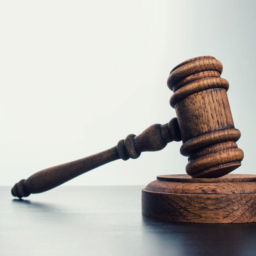BLOCKCHAIN TECHNOLOGY
Blockchain technology is one of the most popular technologies today, and it is rapidly gaining traction. This technology is also making its way into traditional conflicts settlement. The widespread usage of smart contracts in place of regular contracts is what has introduced technology in this system. One of the problems that the execution of these contracts poses is resolving disputes between the contracting parties and this specific challenge can be best addressed by using blockchain arbitration.
Before delving into the concept of Blockchain arbitration, it is primarily important to understand what Blockchain Technology is. It is a distributed ledger technology with a decentralized database system. A blockchain database is a unique database. Blockchains store data in blocks that are then linked together, which is different from how a regular database stores data. It may store a variety of data as new information is received, but the most prevalent application so far has been as a transaction ledger. In the case of Bitcoin, blockchain is used in a decentralized manner, which means that no single person or organization has control over a new block., instead, all users have control collectively. The block is chained onto the preceding block once it has been filled with data, resulting in a chronological chain of data.[1]
Blockchain has been utilized to settle disputes in recent years. Despite its infancy, blockchain disputes resolution has the potential to be a speedy, cost-effective, and efficient method of settling disputes. However, using blockchain technology to resolve disputes has several drawbacks: due process and jeopardized. The lack of legislation governing the use of blockchain in conflict resolution is another impediment to more frequent market participation. A mechanism is known as “multi-signature address” is one prominent form of block-chain based dispute resolution. Here, the buyer and seller enter into a “Smart Contract”, which is a computer program that automatically executes and contains the conditions of the agreement in its code.[2]
Before the transaction’s complexation, this gives them both a digital “key”. If both the buyer and seller are satisfied with the transaction, both keys are used to release the bitcoin to the seller. If there is a dispute, a third party will resolve it by handing over a second key to the person who they believe is entitled to the money. Two keys will now be available to the aforementioned party. This is called a multi-signature address.
POSITIVITY AND PITFALLS
The advantages of blockchain-based dispute resolution methods are numerous. Most importantly, they can save parties money by avoiding the time-consuming process of litigating in state courts and automatically enforcing judgments. This avoids protracted and often costly legal fights to enforce decisions. However, the pursuit of cost savings mustn’t jeopardize the due process. Because blockchain jurors and arbitrators are seldom attorneys, the application of blockchain dispute resolution systems for complicated issues may be ineffective.
Furthermore, because the distributed ledger technology is self-administering, it deprives parties of the ability to negotiate flexible or novel settlement conditions. As a result, most outcomes are binary – pay claimant, don’t pay claimant etc. – leaving little space for a middle ground, which may be the most equitable option in some situations. The potential of corruption in blockchain dispute resolution is also present. Indeed, no software is bug-free, and this might provide an unwarranted cybersecurity risk in the context of traditional dispute resolution.
The use of blockchain in conflict settlement is still mainly unregulated. This is mostly due to the decentralized structure of blockchain, which makes establishing jurisdiction a challenge. Smart Contracts are likely to be enforced in the same manner that traditional contracts are. The Law Society’s “Block-Chain: Legal and Regulatory Guidance Report”[3] calls for authoritative guidance on the topic, and it is expected that this would lead to more regulation of Blockchain in Dispute Resolution.
Law firms must adopt blockchain-based dispute resolution as soon as feasible. There are clear benefits for clients, and attorneys must understand and be able to advise clients on the usage and suitability of various blockchain dispute resolution methods. Lawyers can also make a difference outside of their client base. Those with legal knowledge and an understanding of the possible benefits and downsides of blockchain’s role in conflict settlement will not only increase client participation but will also be in a good position to advise the consultation group and regulators.
Blockchain, like most millennials its age, has got a lot of public scrutiny in the previous decades, with businesses all across the world speculating on what the technology can do and where it will go in the future. As we enter the decade of blockchain, it’s no longer a question of “if” legacy organizations will adopt the technology – it’s a question of “when”.
The key benefit of Blockchain is the accuracy of the chain. A network of thousands of computers validates on the blockchain network. This virtually eliminates the human intervention in the verification process, resulting in lower human error and a more accurate record of data. Even if one of the machines in the network made a Computational error, only one copy of the blockchain would be affected. That error would have to be made by at least 51% of the network’s computers to propagate to the rest of the blockchain, which is nearly impossible for a large and increasing network like Bitcoins.[4]
CONCLUSION
It provides secure transactions. Once a transaction has been recorded, the blockchain network must verify its validity. Thousands of computers on the blockchain race to verify that the purchase’s data are correct. After a machine has confirmed the transaction, it is added to the blockchain block. The hash of each block on the blockchain is unique, as well as the hash of the previous block. The hash code of a block changes when the information on it is changed in any way – However, the hash code of the block after it would not. Because of the disparity, changing the information on the blockchain without notice is extremely difficult. With the growth and widespread use of blockchain technology, the breadth of the transactions is possible and will broaden to include practically any type of transaction. As a result, as the usage of this technology grows, so will the number of conflicts.[5] In such a case, having an effective method of dispute settlement, such as blockchain dispute resolution, would be essential. It will be more successful than litigation due to the numerous procedural flaws in litigation when it comes to smart contracts conflicts.
Author(s) Name: Mallela Navya (Student, Damodaram Sanjivayya National Law University, Visakhapatnam)
References:
[1] Luke Conway, ‘Blockchain Explained’ (Investopedia 2021) <https://www.investopedia.com/terms/b/blockchain.asp> accessed 6th July 2021
[2] Koji Takahashi, ‘Blockchain and Online Dispute Resolution’ (2018) 17 SSRN <https://ssrn.com/abstract=3566676> accessed 7 July 2021
[3] The Law Society ‘Blockchain: Legal and Regulatory Guidance Report’ (Appliedblockchain 2020)
https://appliedblockchain.com/assets/pdfs/blockchain-legal-and-regulatory-guidance-report> accessed 7 July 2021
[4] Pietro Ortolani, ‘The Impact of Blockchain Technologies and Smart Contracts on Dispute Resolution: Arbitration and Court Litigation at the Cross Roads’ (2019) 24 Uniform Law Review https://doi.org/10.1093/ulr/unz017 accessed 8 July 2021
[5] Riikka Koulu, ‘Blockchains and Online Dispute Resolution: Smart Contracts as an Alternative to Enforcement’, (2016) 13 SCRIPTed <https://script-ed.org/wp-content/uploads/2016/05/koulu.pdf?d=07092021> accessed 6 July 2021















